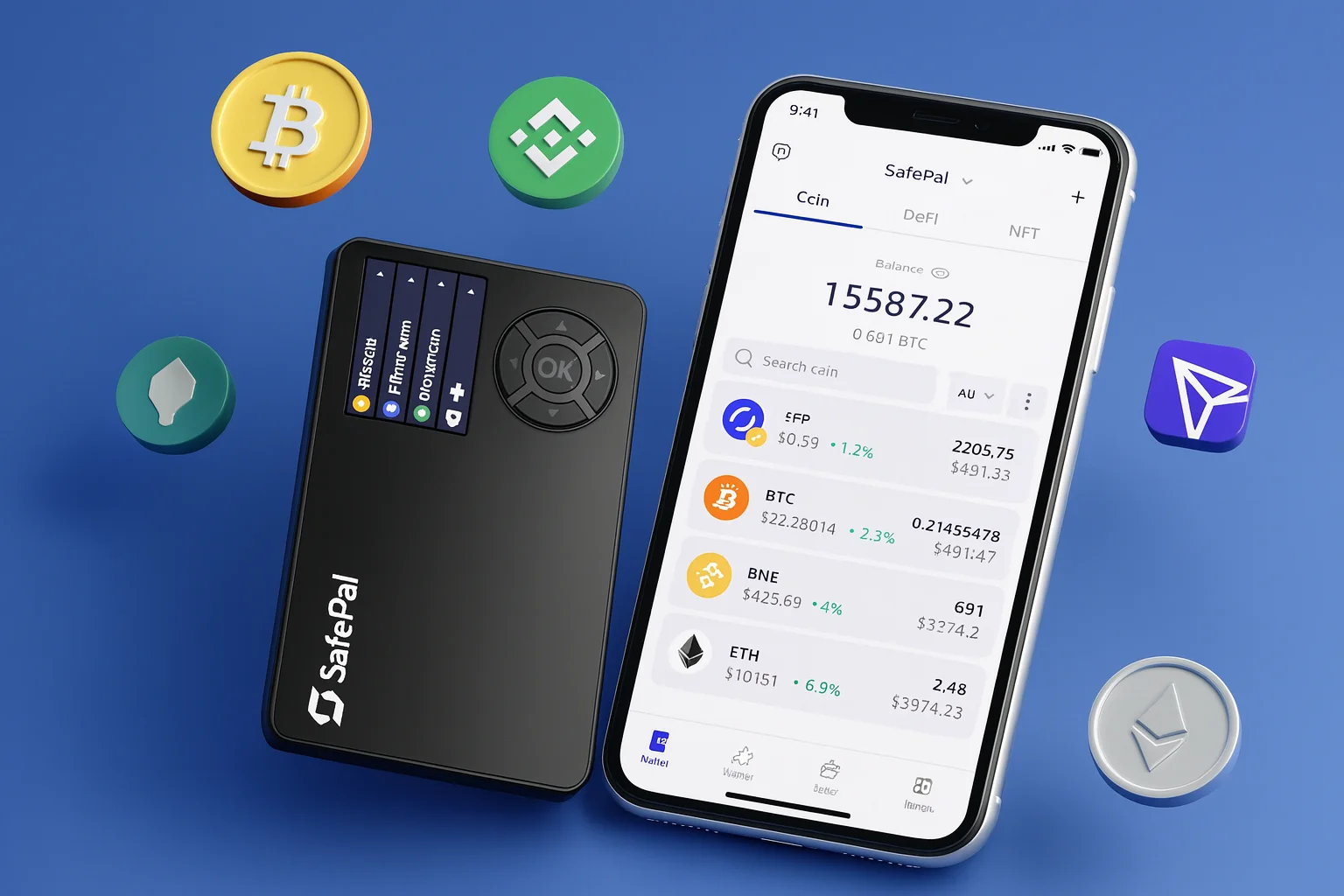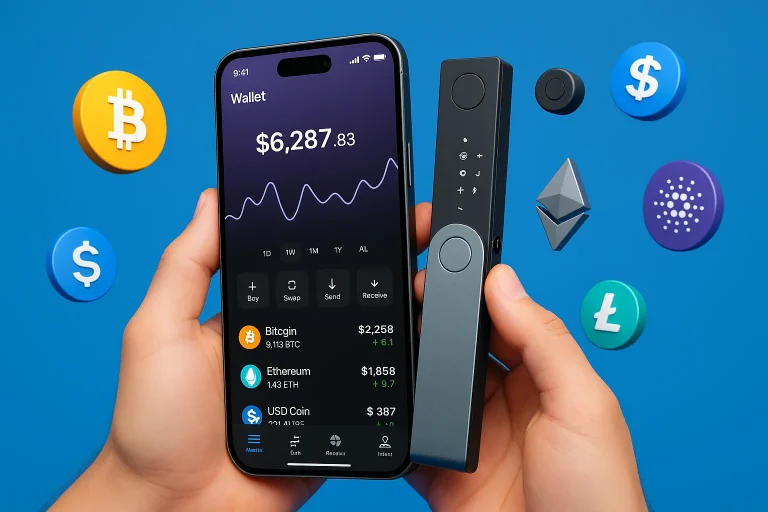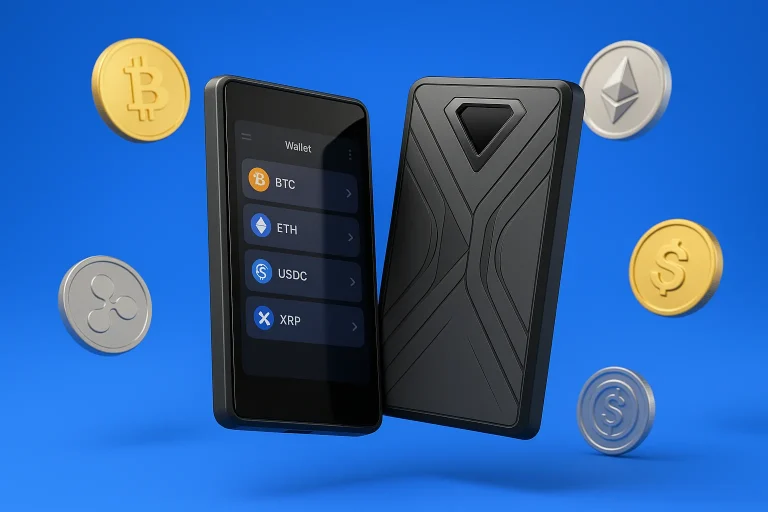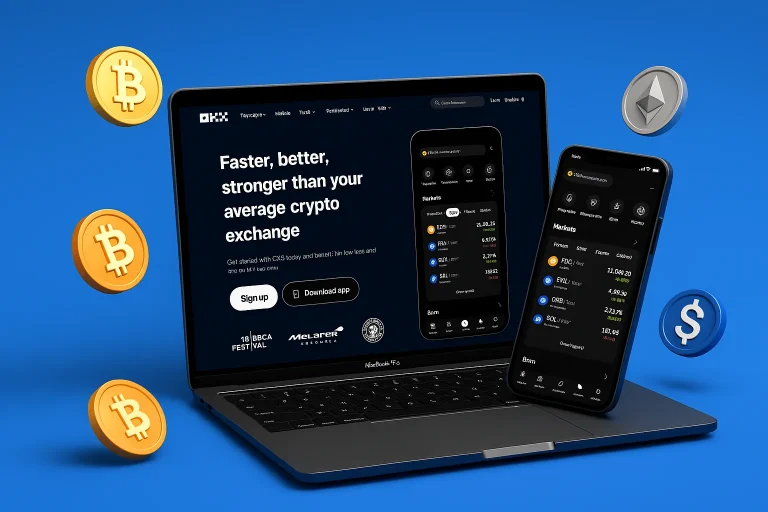For years, choosing a secure crypto wallet has meant turning to established names like Ledger and Trezor. While these brands dominate the market, many users find their devices to be expensive, restrictive, or lacking in innovation at the entry-level.
This gap has left both complete beginners and experienced crypto users searching for alternatives. High costs, limited integrations, and the steep learning curve associated with these wallets often discourage adoption. Meanwhile, the rapid growth of digital assets and NFTs demands more versatile and affordable solutions. Without a reliable option, users risk either overspending on premium wallets or exposing their funds to the vulnerabilities of software wallets.
That is where the SafePal devices step in. In this SafePal S1 review 2025, we take a closer look at how SafePal, backed by Binance Labs and other investors, has positioned itself as a challenger to the established players.
This SafePal crypto wallet review will cover the strengths and weaknesses of the SafePal S1, its UI/UX, supported assets, and security architecture to see if it truly offers an affordable, secure, and user-friendly alternative to Ledger and Trezor.
Table of contents
SafePal S1 Specifications | |
|---|---|
| Connectivity | 100% air-gapped; QR code signing only; USB-C for charging (no Bluetooth, WiFi, NFC) |
| Compatibility | iOS, Android (via SafePal wallet app); browser extension for desktop |
| Input | Five physical buttons (Left, Up, Right, Down, OK) |
| Secure Chip | Independent certified secure element (CC EAL6+) |
| Display | 1.3″ IPS full-color screen |
| Camera | Built-in camera for high-speed QR scanning |
| Battery | 400 mAh rechargeable battery; up to 20 days with 10 minutes daily usage; charged via USB-C |
| Operating Temperature | -20°C to +70°C (-4°F to +158°F) |
| Authentication | PIN code, device authentication, optional passphrase |
| Recovery Backup | 12-word, 18-word, or 24-word recovery seed (BIP39 standard) |
| Privacy & Security | Self-custody; anti-tampering self-destruct mechanism, multi-layer security sensors, true random number generator |
| Security Model | Cold wallet, 100% offline signing with firmware anti-tampering protection |
| Supported Assets | Cold wallet, 100% offline signing with firmware anti-tampering protection |
| Languages | 15 languages |
| Software Support | SafePal App (mobile), SafePal browser extension (desktop) |
| In-App Features | Cross-chain swaps, Binance/Bitget/MEXC/BingX integration, staking, yield, CeDeFi banking gateway in 60+ countries |
| Certifications | CE, RoHS, X-ray safe for air travel |
What is SafePal S1?
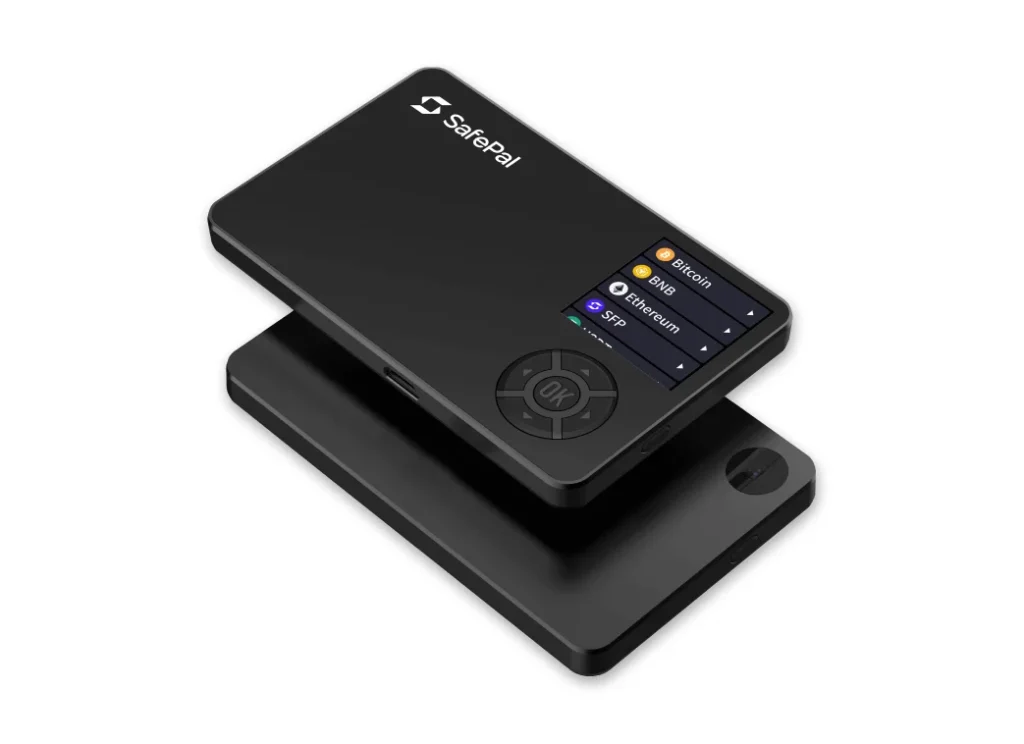
The SafePal S1 is the first hardware wallet developed by SafePal, a company founded in 2018 by Veronica Wong, a Chinese entrepreneur with a background in security product development at Tencent.
Although SafePal is officially headquartered in Singapore, the company maintains strong ties to China, with its hardware devices shipped from Shenzhen.
SafePal quickly positioned itself in the crypto industry as an alternative to existing wallet providers like Ledger and Trezor, which were already recognized as the benchmarks for other hardware wallets at the time.
SafePal received backing from Binance Labs, making it the first hardware device Binance supported. Beyond Binance, investors such as Archerman Capital, Superscrypt, Clever Capital, and YZi Labs also participated, with funding rounds raising over $7 million to support the development of the SafePal ecosystem.
Launched in 2019, the SafePal S1 entered the market to offer a secure and accessible option for cryptocurrency users who wanted to store their digital assets in a cold wallet solution. It was released into a competitive landscape, where most wallets relied on similar approaches; however, SafePal introduced its own path to innovation by combining affordability with robust protection.
SafePal S1 Review: Security Architecture
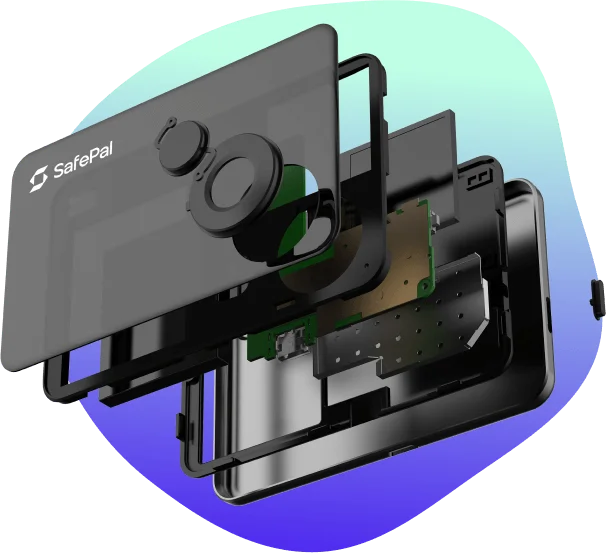
1. Dual-Chip Architecture and Secure Element
The SafePal S1 uses a dual-chip system. One chip manages the operating system and screen, while an independent secure element stores private keys and executes signing. This prevents leakage through the central controller.
By comparison, the Trezor Model One does not utilize a secure element, instead opting for full transparency and an open-source design.
The Ledger Nano S Plus also uses a secure element but does not provide open verification.
SafePal positions itself between the two approaches by offering both a secure element and verifiable firmware processes.
2. Air Gapped QR Code Workflow
The S1 is entirely air gapped and communicates only via QR codes with the SafePal wallet app. No USB or Bluetooth data transfer is required, eliminating malware attack vectors common to desktop and mobile integrations.
By contrast, Ledger relies on a wired USB connection, and Trezor also uses USB, which means those devices are more exposed to host-level threats.
SafePal’s QR workflow ensures sensitive data is stored securely inside the device at all times.
3. Device Authentication and Firmware Checks
During setup, SafePal requires device authentication to prove that the wallet is genuine. Its firmware enforces firmware anti-tampering protection, rejecting unauthorized or downgraded versions. This includes cryptographic signature checks before every boot.
Trezor offers frequent updates but has no downgrade restrictions, while Ledger allows firmware upgrades through Ledger Live but does not offer visible device authentication for users.
SafePal’s model prevents backdoors through anti-tampering self-destruct triggers and blocks rollback attacks.
4. PIN Code and Brute Force Protection
The S1 uses a PIN code entered directly on the physical device. Failed attempts trigger exponential delays, making brute force infeasible. This system is similar to Ledger, which also uses PIN entry on the device, but contrasts with Trezor’s randomized grid method.
In practice, SafePal’s PIN input is straightforward, ensuring both complete beginners and advanced crypto users can secure access effectively.
5. Self-Destruct and Tamper Sensors
The device incorporates sensors that detect physical intrusion. If tampering occurs, the tampering self-destruct mechanism erases all secrets and destroys the stored private keys.
This is not present in either the Trezor Model One or Ledger Nano S Plus, giving the SafePal S1 a unique advantage in physical attack scenarios.
6. Firmware Security and Runtime Integrity
SafePal S1 enforces firmware anti-tampering protection and integrity checks at boot. If even a single byte is modified, the device will not run.
Trezor relies more on the openness of its code for peer review, and Ledger uses a proprietary, closed secure element where checks are not externally auditable.
SafePal remains transparent about its signed update system while combining it with hardware-level protection.
7. Practical Reliability in the Crypto Market
Over time, SafePal S1 has not been compromised under real-world conditions. Kraken Security Labs attempted to bypass its firmware verification, but tests confirmed that the security features, including encrypted storage and boot chain integrity, successfully resisted attacks.
For its competitive price, SafePal S1 integrates more advanced features than most wallets in its class, providing robust security features in a credit card-sized form factor that can securely store crypto assets for long-term holding.
SafePal S1 Review: Supported Assets
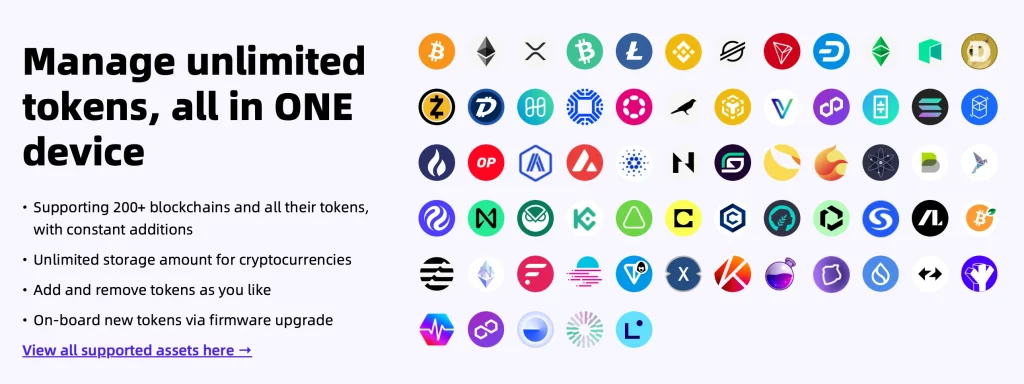
The SafePal S1 hardware wallet offers one of the broadest ranges of supported coins and tokens available today. It is compatible with more than 30,000 crypto assets across at least 200 blockchains, including leading cryptocurrencies such as Bitcoin (BTC), Ethereum (ETH), Binance Coin (BNB), Litecoin (LTC), and Bitcoin Cash (BCH).
Beyond major coins, the wallet supports thousands of ERC-20 tokens and continues to expand coverage through firmware updates.
In addition to cryptocurrencies, the SafePal wallet app allows users to manage NFTs, including those based on the ERC-721 and ERC-1155 standards. These can be used across multiple blockchains, such as Ethereum, BNB Chain, Solana, and Polygon, allowing crypto users to store their coins and digital collectibles in a single cold wallet.
A key distinction compared to other hardware wallets, such as Ledger and Trezor, is that SafePal relies primarily on its own app rather than third-party software wallets like MetaMask. This approach ensures that digital assets and NFTs can be handled within the SafePal ecosystem, but it also means external integrations are more limited.
In this regard, the SafePal S1 offers extensive multi-currency support and robust asset management options within a single hardware device. With broad coverage of coins, tokens, and NFTs, users can securely store cryptocurrencies and collectibles. The only notable drawback is its reliance on the SafePal wallet app, which may be restrictive for users accustomed to wider wallet compatibility.
SafePal S1 Review: Usability
The SafePal S1 is designed as a user-friendly hardware wallet suitable even for complete beginners.
The physical device has a 1.3-inch screen, five navigation buttons (Left, Up, Right, Down, OK), and a built-in camera for scanning QR codes. Setup begins with language selection, followed by device authentication to verify the unitis authenticity before creating a wallet or importing an existing one.
Pairing with the SafePal wallet app is accomplished through encrypted QR code scanning, ensuring all private keys remain offline. This approach ensures that sensitive information and digital assets are never exposed to an internet connection.
All approvals, including transaction confirmations, PIN entry, and recovery phrase verification, are performed directly on the hardware device, thereby reinforcing its air-gapped security model.
Firmware updates are verified for authenticity before installation, protecting against tampering or malicious versions and ensuring the wallet’s advanced security features are supported.
The SafePal wallet app is compatible with both iOS and Android devices, and a browser extension is available for desktop use. It does not store private keys or sensitive data; all signing happens on the hardware device. The app manages crypto assets and NFTs, allowing access to decentralized applications while supporting swaps, bridges, and integration with Binance.
On Reddit, many users highlight that the app is user-friendly and feature-rich, though some point out its dependence on the SafePal ecosystem and limited compatibility with third-party software wallets compared to Ledger or Trezor.
The SafePal S1 currently supports 15 languages, with more planned for future updates: English, German, French, Spanish, Turkish, Italian, Portuguese, Simplified Chinese, Traditional Chinese, Korean, Japanese, Russian, Thai, Indonesian, and Vietnamese.
Customer support is available through the SafePal Help Center, manuals, and ticket system, offering step-by-step assistance for setup, updates, and troubleshooting.
SafePal S1 Hardware Wallet Review: UI/UX

The SafePal S1 hardware wallet features a credit card-sized physical device with a 1.3-inch color screen, five buttons, and a built-in camera for QR code scanning, providing a minimal yet clear interface that allows users to confirm each wallet address and transaction on-screen.
While this design is secure and straightforward, some Reddit users and reviewers note that button navigation can feel slow compared to touch-enabled hardware devices.
The app is generally considered user-friendly, supporting multiple wallets within a single wallet ecosystem with broad asset coverage.
SafePal S1: Pricing
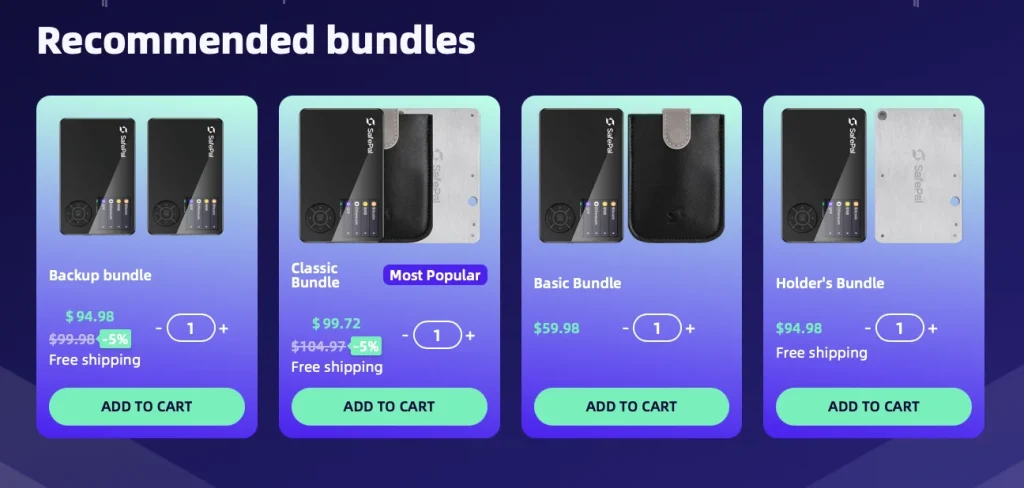
The SafePal S1 is priced at $49.99, making it one of the most affordable hardware wallets on the market. Despite its low cost, the device includes air-gapped security, a self-destruct mechanism, and firmware anti-tampering protection, features typically found in more expensive wallets.
With multi-currency support for over 30,000 digital assets and NFTs, the S1 offers reliable cold storage and strong security features at a fraction of the price of premium wallets.
Compared to competitors, the Trezor Model One retails at around €49, while the Ledger Nano S Plus costs about $79, and the Ledger Nano X is priced at approximately $149. This positions the SafePal S1 as a competitive entry point, offering both complete beginners and experienced crypto users a secure cold wallet solution without overspending.
Bundled purchases and accessories are also available for those who prefer additional convenience.
How to Use SafePal S1
Setting up the SafePal S1 hardware wallet is a secure and straightforward process. Here’s a quick guide to get started:
Unbox your SafePal S1
Inside, you’ll find the physical device, a USB cable for charging, a recovery seed card, and a cleaning cloth.
Plug in
Power on the device and select your preferred language.
Authentificate
Complete device authentication to verify your wallet is genuine and has not been tampered with.
Create a new wallet or log in
Choose whether to create a wallet or import an existing one. When creating a new wallet, please write down your recovery seed on the provided card and store it securely offline.
PIN
Set a PIN code on the device to protect access.
Download mobile app
Download the SafePal wallet app from the Google Play Store or Apple App Store and pair it with the S1 by scanning the dynamic QR code shown on the device. This ensures private keys stay completely offline while transactions are signed.
Manage assets
Once connected, you can use the app to manage your crypto assets, including sending and receiving coins, NFTs, and interacting with decentralized applications.
Important: Keep your recovery seed card safe, never share it digitally, and avoid storing it in cloud services. The SafePal S1 is designed as a cold wallet, ensuring that your sensitive data and private keys are always secure on the hardware device.
Comparison Table: SafePal S1 vs Ledger Nano S Plus vs Trezor Model One
| Image | Product | Features | Price |
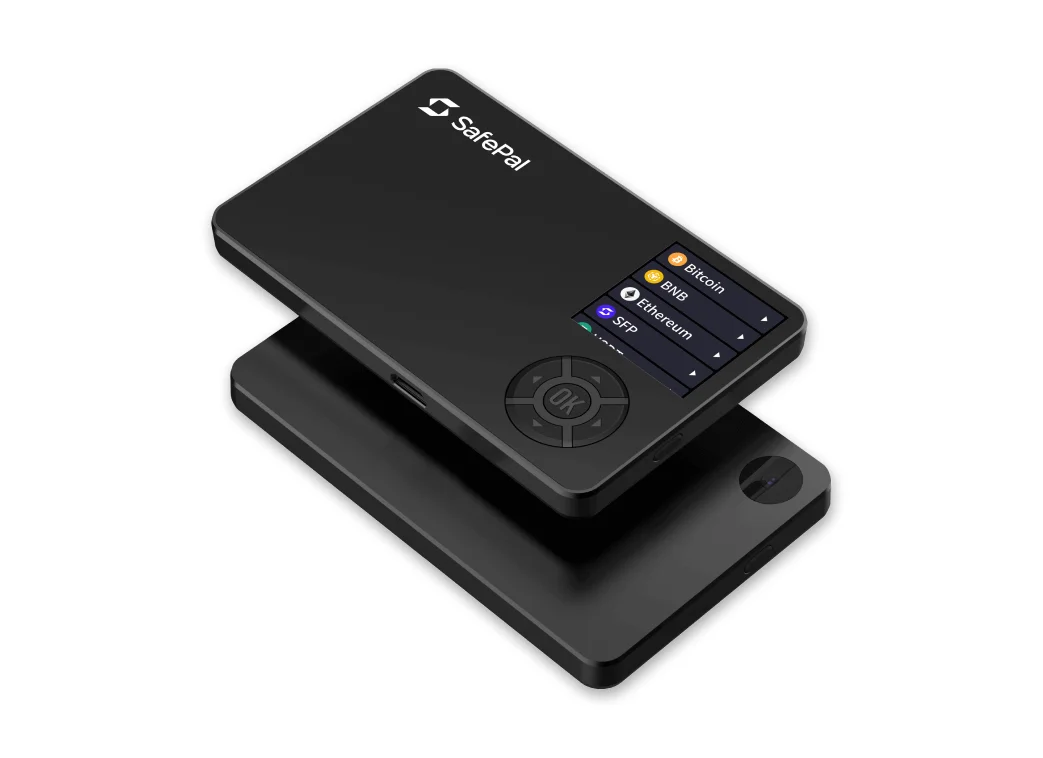 | SafePal S1 | ||
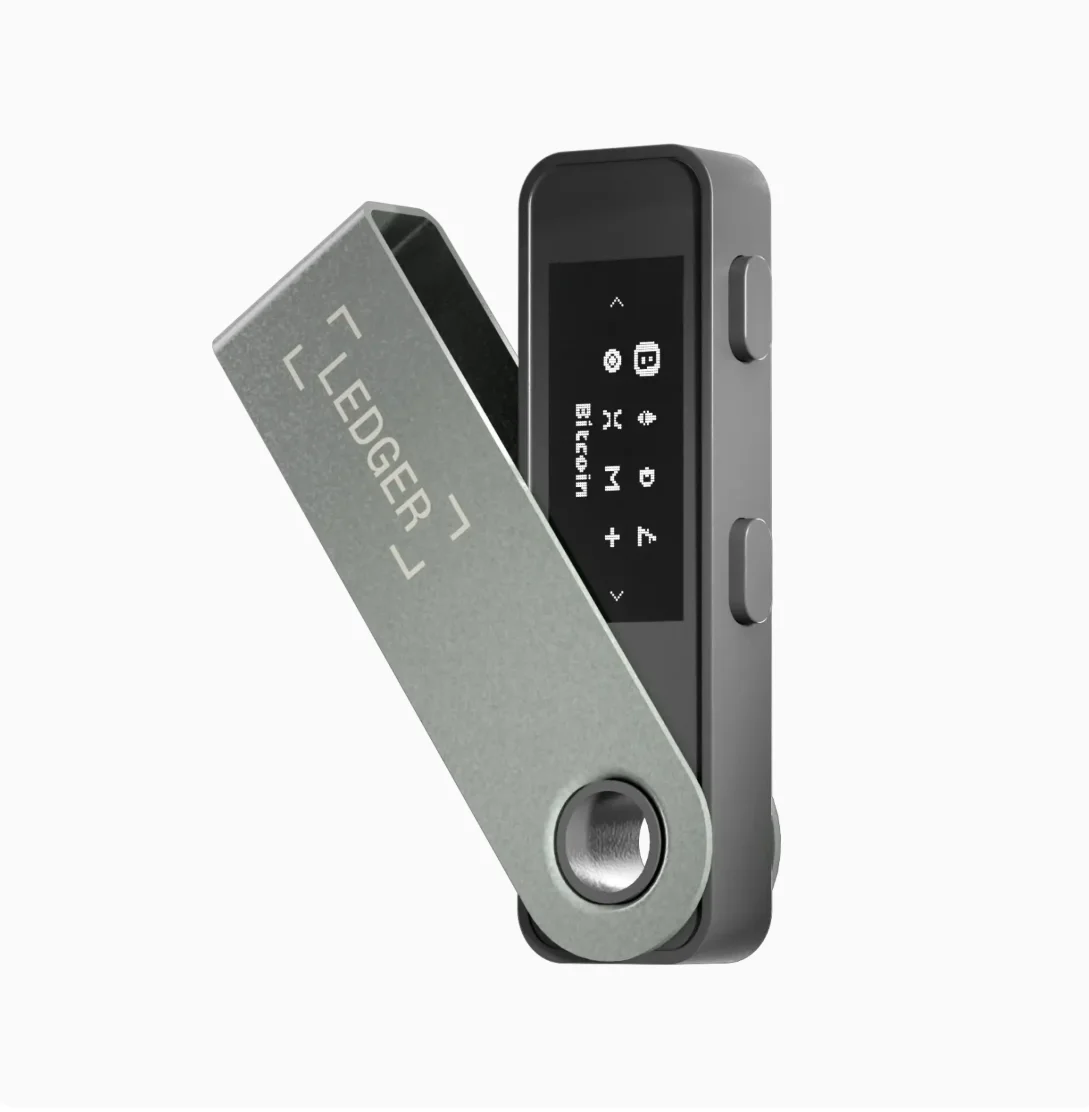 | Ledger Nano S Plus | ||
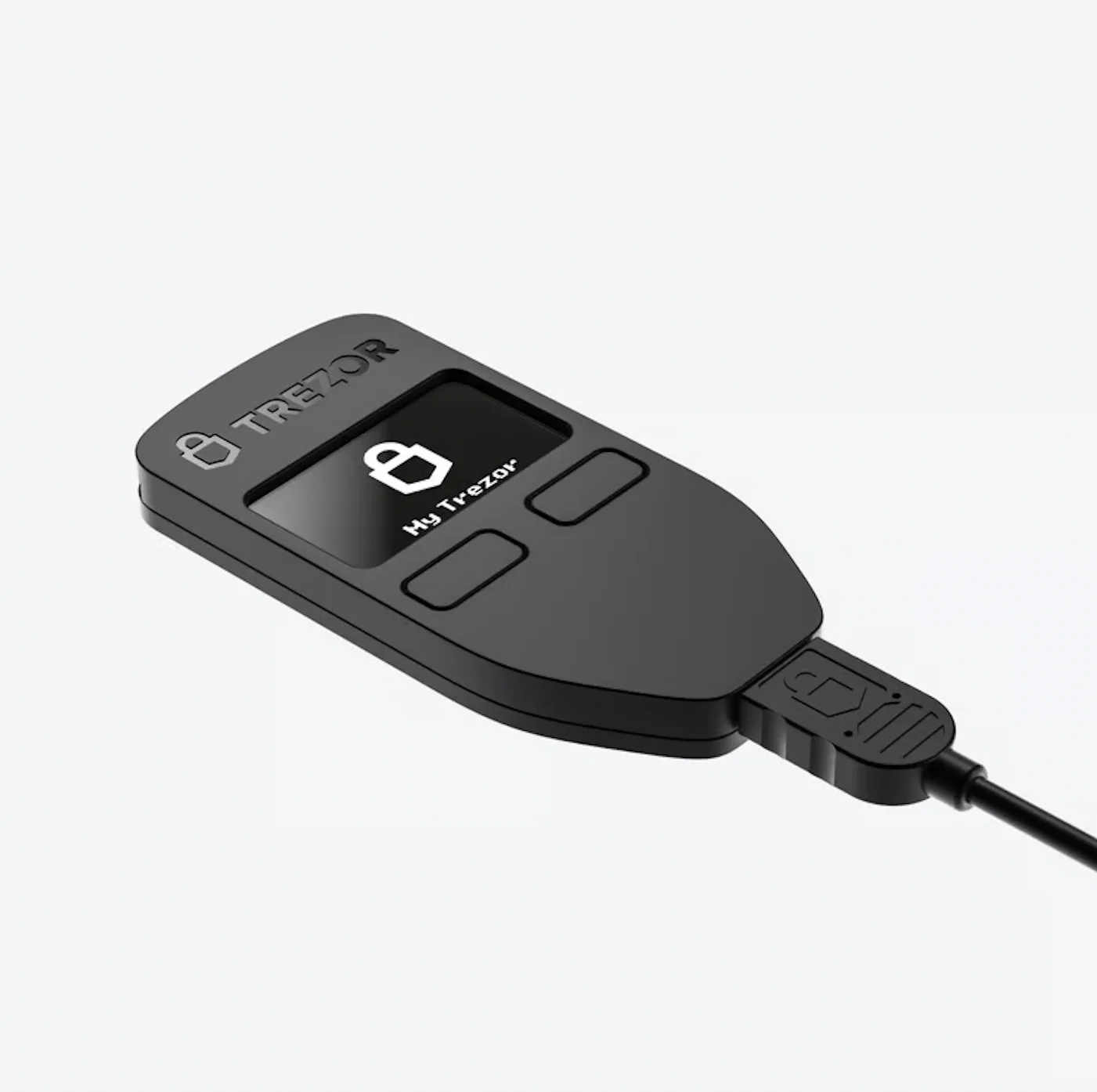 | Trezor Model One |
SafePal S1, A Good Alternative for Ledger and Trezor
SafePal S1 is part of a growing crypto ecosystem. With support for swaps, staking, NFTs, and CeDeFi features via its app, it goes beyond cold storage.
Whether you need secure offline access or mobile convenience, SafePal provides the flexibility to choose. If you’re looking for a budget-friendly alternative to Ledger and Trezor, backed by Binance Labs and built for Web3, SafePal S1 is a top pick.
FAQ
How safe is SafePal S1?
Yes, the SafePal S1 is a safe option. It is a cold wallet that keeps your private keys offline with air gapped security, firmware anti-tampering protection, and a self-destruct mechanism, ensuring your digital assets remain secure.
Has SafePal ever been hacked?
No, the SafePal hardware wallet has never been hacked. Because it is a hardware device that operates independently of an internet connection, it offers stronger protection compared to software wallets.
How long does the SafePal S1 battery last?
The SafePal S1 comes with a rechargeable battery that typically lasts several weeks on standby, up to 20 days. It can be charged easily with a USB cable, ensuring the physical device is always ready when needed.
How do I withdraw my money from SafePal?
You can access your crypto assets using the built-in QR code system by connecting the SafePal wallet app to the SafePal S1. This allows users to create wallet transactions and send funds to any wallet address without exposing sensitive data.
Does Binance own SafePal?
No. SafePal is an independent company, but the SafePal ecosystem is backed by Binance, one of its early investors. The wallet supports Binance Smart Chain and numerous other networks, offering multi-currency support.
Does SafePal have fees?
SafePal does not charge fees for wallet usage. However, like most wallets, transaction fees for supported coins (such as Bitcoin, Ethereum, or Bitcoin Cash) apply and are paid to the network, not SafePal.
Do you need an ID for SafePal?
No ID is required to use the SafePal wallet or the SafePal app. Since it is a hardware wallet designed to securely store crypto, users can set it up without providing personal details, making it suitable for both complete beginners and advanced crypto users.

